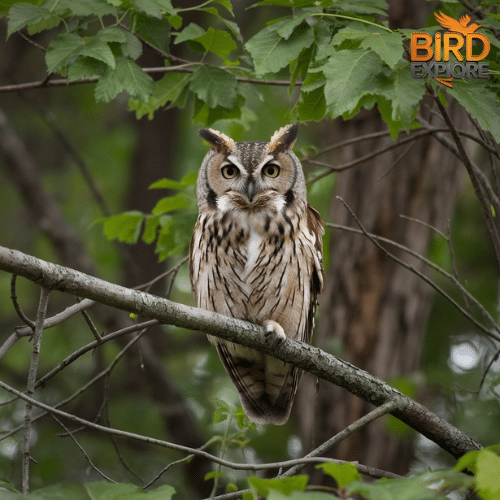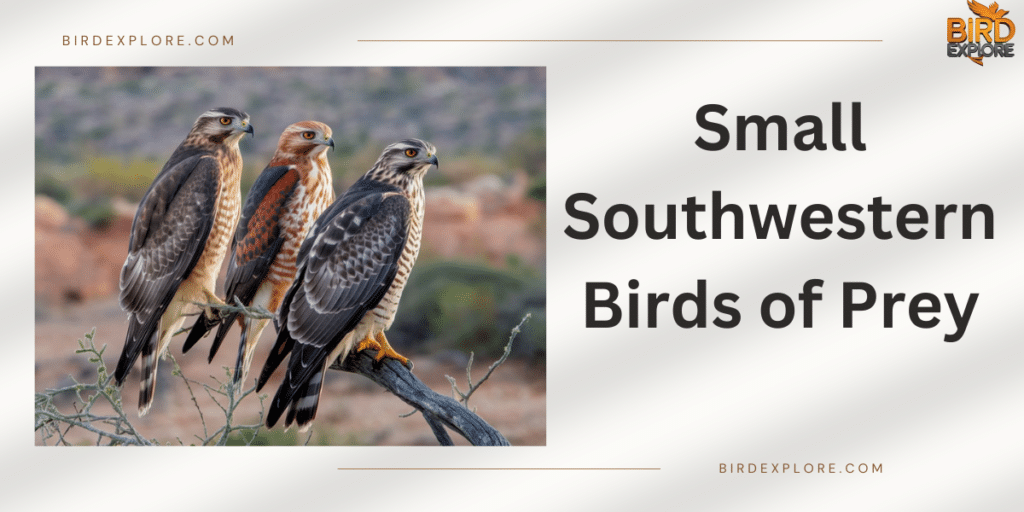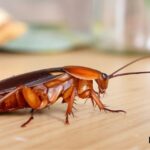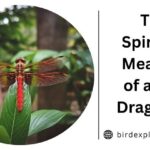Introduction
The American Southwestern, renowned for its diverse landscapes, is also home to a range of fascinating small birds of prey. Despite their smaller stature compared to larger raptors, these birds play critical roles in their ecosystems. This guide explores the unique characteristics, behaviors, and conservation needs of some notable small southwestern birds of prey, including the American Kestrel, Western Screech-Owl, and Burrowing Owl.
Key Species of Small Southwestern Birds of Prey
American Kestrel (Falco sparverius)
Physical Description
The American Kestrel is the smallest falcon in North America, measuring between 9 to 12 inches in length with a wingspan of 20 to 24 inches. Males are particularly striking with their blue-gray wings and rusty red back, while females display more subdued brown tones. This bird’s vibrant colors make it a standout in the avian world.
Habitat and Range
American Kestrels are highly adaptable and can be found in open habitats such as grasslands, prairies, and deserts. In the southwestern U.S., they are common in Texas, Arizona, and California. These birds are often seen perched on fence posts or power lines, using these vantage points to survey their surroundings.
Diet and Hunting Techniques
Their diet is diverse, encompassing insects, small mammals, and birds. One of their most notable hunting techniques is “kiting,” where the kestrel hovers in the air with rapid wingbeats, scanning the ground below for prey. This method allows them to spot and catch prey with impressive precision.
Conservation Status
Classified as “Least Concern” by the International Union for Conservation of Nature (IUCN), American Kestrel populations are currently stable. However, they face threats from habitat loss and pesticide use, which can affect their food sources and overall health.

Western Screech-Owl (Megascops kennicottii)
Physical Description
The Western Screech-Owl is a small nocturnal raptor, measuring between 7 to 10 inches in length with a wingspan of 18 to 24 inches. Its plumage is mottled gray and brown, providing excellent camouflage against tree bark. The owl’s large yellow eyes and ear tufts are distinguishing features that help it blend into its surroundings.
Habitat and Range
This owl inhabits a variety of environments, including woodlands, deserts, and suburban areas. In the southwestern U.S., it is commonly found in Arizona, New Mexico, and southern California. Western Screech-Owls often nest in tree cavities or old buildings, where their camouflage helps them stay hidden.
Diet and Hunting Techniques
Western Screech-Owls have a varied diet that includes small mammals, birds, insects, and amphibians. They hunt at night, using their exceptional night vision and acute hearing to locate prey. Their hunting technique involves silently swooping down from a perch, catching prey with their sharp talons.
Conservation Status
The Western Screech-Owl is also classified as “Least Concern” by the IUCN. However, they face challenges from habitat destruction and competition with other cavity-nesting birds. Conservation efforts focus on preserving suitable nesting sites and maintaining their habitats.

Burrowing Owl (Athene cunicularia)
Physical Description
The Burrowing Owl is notable for its long legs, large yellow eyes, and distinctive bobbing motion. Its brown plumage, adorned with white spots, helps it blend into its desert and grassland environments. Measuring between 7 to 10 inches in length with a wingspan of 21 to 24 inches, it is a distinctive and agile bird.
Habitat and Range
As its name suggests, the Burrowing Owl nests in burrows, often those created by other animals such as prairie dogs. It is found in grasslands, deserts, and agricultural areas across the southwestern U.S. and into Mexico. Unlike many other owls, the Burrowing Owl is active during the day and at dusk, making it easier to spot.
Diet and Hunting Techniques
The Burrowing Owl has a varied diet that includes insects, small mammals, birds, and reptiles. It is known for its unique hunting behavior, often running along the ground to catch prey. This diurnal and crepuscular activity sets it apart from many other owl species that hunt exclusively at night.
Conservation Status
The Burrowing Owl is classified as “Threatened” in some areas due to habitat loss and declining prey populations. Conservation efforts focus on protecting burrow sites and ensuring the availability of prey species to support healthy populations.

Conservation Status and Challenges
Habitat Loss
Habitat loss is one of the most pressing threats to small southwestern birds of prey. Urban expansion, agricultural development, and changes in land use have led to a reduction in available habitats. For example, converting grasslands into farmland or building residential areas can eliminate important hunting and nesting sites. Protecting and restoring these habitats is crucial for the survival of these birds.
Pesticide Use
Pesticides can have harmful effects on birds of prey, both directly and indirectly. These chemicals can poison raptors through contaminated prey or reduce prey populations by killing insects and small mammals. Pesticide residues can accumulate in the food chain, affecting the health of raptors. Reducing pesticide use and promoting sustainable agricultural practices are essential for mitigating these impacts.
Climate Change
Climate change introduces additional challenges for small birds of prey. Altered temperature and precipitation patterns can affect the availability of prey and nesting conditions. For instance, droughts can reduce insect and small mammal populations, impacting the food supply for raptors. Conservation strategies include monitoring climate impacts and implementing adaptive management practices to help these birds adjust to changing conditions.
Conservation Efforts
Numerous organizations and programs are dedicated to the conservation of small southwestern birds of prey. Initiatives include habitat restoration projects, research on pesticide impacts, and strategies for adapting to climate change. Public involvement in conservation through donations, volunteering, and participating in citizen science projects is vital for supporting these efforts.

Observation Tips and Best Practices
Ideal Observation Times
To maximize your chances of observing small birds of prey, consider their activity patterns. Dawn and dusk are optimal times for spotting many raptors, as these are peak hunting periods. For owls, early morning and nighttime are the best times for observation. Knowing the specific activity patterns of each species can enhance your birdwatching experience.
Recommended Gear
Equipping yourself with the right gear can significantly improve your birdwatching experience. High-quality binoculars or a spotting scope are essential for viewing distant birds. A field guide specific to the southwestern U.S. will help with identification. A camera with a zoom lens is also useful for capturing detailed images of these elusive raptors.
Ethical Birdwatching
Respect for wildlife and their habitats is crucial during birdwatching. Maintain a safe distance from birds to avoid disturbing them and avoid making loud noises or sudden movements. Follow local guidelines and regulations to minimize your impact on the environment. Ethical birdwatching ensures that your activities contribute positively to wildlife conservation.
Conservation and Citizen Science
Participating in citizen science projects can provide valuable data for conservation efforts. Organizations such as the Audubon Society and the Peregrine Fund involve the public in monitoring raptor populations. Contributing observations and data helps track and protect these birds, supporting ongoing conservation work.

Key Facts and Figures
Here’s a concise summary of the key species of small southwestern birds of prey, including their physical characteristics, habitats, diets, and conservation statuses:
| Feature | American Kestrel | Western Screech-Owl | Burrowing Owl |
| Scientific Name | Falco sparverius | Megascops kennicottii | Athene cunicularia |
| Common Name | American Kestrel | Western Screech-Owl | Burrowing Owl |
| Size | 9-12 inches (23-30 cm) | 7-10 inches (18-25 cm) | 7-10 inches (18-25 cm) |
| Weight | 3-5 ounces (85-150 grams) | 3-8 ounces (85-230 grams) | 5-8 ounces (140-225 grams) |
| Wingspan | 20-24 inches (50-61 cm) | 18-24 inches (46-61 cm) | 21-24 inches (53-61 cm) |
| Plumage | Blue-gray wings, rusty red back | Mottled gray and brown | Brown with white spots |
| Habitat | Open fields, grasslands, deserts | Woodlands, deserts, suburban areas | Grasslands, deserts, agricultural areas |
| Range | Southwestern U.S. (TX to CA) | Southwestern U.S. (AZ, NM, CA) | Southwestern U.S. (TX to CA), Mexico |
| Diet | Insects, small mammals, birds | Small mammals, birds, insects, amphibians | Insects, small mammals, birds, reptiles |
| Hunting Technique | Hovering (“kiting”), diving | Silent swooping using keen hearing | Running along the ground, diurnal and crepuscular |
| Behavior | Perches on wires, poles; adaptable | Nocturnal, excellent camouflage | Nests in burrows, distinctive bobbing motion |
| Conservation Status | Least Concern | Least Concern | Threatened by habitat loss |
Conclusion
Small birds of prey in the American Southwest are vital to their ecosystems, offering insights into the health of their environments and playing key roles in controlling pest populations. The American Kestrel, Western Screech-Owl, and Burrowing Owl each exhibit unique adaptations and behaviors that highlight their importance in nature.
Protecting these birds requires addressing challenges such as habitat loss, pesticide use, and climate change. By supporting conservation efforts, observing ethical birdwatching practices, and participating in citizen science, we can help ensure these remarkable raptors continue to thrive.
Appreciating the small southwestern birds of prey not only enhances our understanding of the natural world but also supports biodiversity. Through informed observation and active conservation, we contribute to preserving these incredible species for future generations.

Kay Lovely is a dedicated writer for Bird Explore, where she brings the latest celebrity news and net worth updates to life. With a passion for pop culture and a keen eye for detail, Kay delivers engaging and insightful content that keeps readers informed about their favorite stars. Her extensive knowledge of the entertainment industry and commitment to accuracy make her a trusted voice in celebrity journalism.







